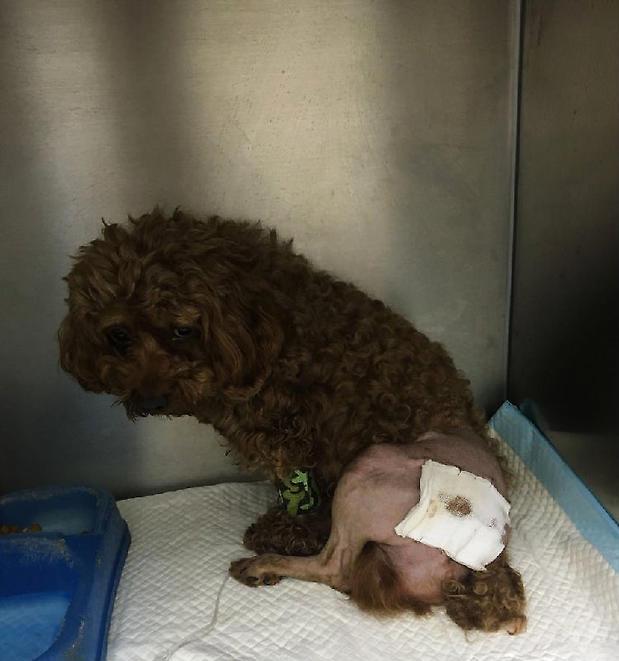The cases of purulent infection in canine traumatic wounds are common clinical cases, but cases with wounds up to 10 cm long and severe wound infection are rare.
I. Basic situation of the case
Case 1: Adult German Shepherd (details), male, two years old, weighing fifty kilograms.
Case 2: A standard-sized teddy dog, female, one and a half years old, weighing 15 pounds, the cause of the injury was also fighting with other dogs, and the leg was injured by the big dog.
Figure 1 Longer wound on the right hind limb
2. Treatment measures
1. Wound treatment
First of all, in the case of a dog suffering from Baoding, shave the hair around the wound to prevent the wound from being stimulated by foreign bodies, and then treat the wound with hydrogen peroxide to oxidize the necrotic tissue in the wound. After the hydrogen peroxide acts on the necrotic tissue for a few minutes, then

Figure 2 The sick dog has a slightly poor spirit and poor appetite
After that, the drainage gauze was replaced once a day and the wound cavity was cleaned until there was no visible pus on the surface of the wound cavity, the wound surface and wound edge were trimmed, and the wound surface and wound edge were routinely closed.
2. Prevent wound infection
Traumatic purulent infection is often a mixed infection of aerobic and anaerobic bacteria. Therefore, when choosing antibiotics, both aerobic and anaerobic bacteria should be taken into account, and a reasonable compatibility can achieve the exact effect. Ceftriaxone sodium and levofloxacin, metronid
Figure 3 Antibiotic infusion therapy to prevent infection
3. Treatment of secondary symptoms
If the dog has symptoms such as elevated body temperature, abstinence from diet, depression and other symptoms, infusion therapy should be taken for more than three days, mainly considering treatment measures such as supplementing energy, correcting electrolyte balance and acid-base balance disorders.
III. Wound recovery
The wounds of the first case were healed after 20 days of treatment, and the wounds of the second case were healed after 25 days of treatment.
Figure 4 Gauze to isolate wounds to prevent infection
Fourth, the treatment experience
1. The basic pathological process of severe purulent infection in dogs is the inflammatory reaction of the wound caused by infection such as bacteria. During the inflammatory process, it is characterized by massive exudation of neutrophils, often accompanied by different degrees of tissue liquefaction, necrosis and pus.
2. The key to the treatment of this disease is:
(1) Placement of debridement and drainage strips.
Surgical debridement and placement of drainage strips can accelerate the discharge of inflammatory products and pus, which is beneficial to wound recovery.
Figure 5 The wound on the right hind limb of the sick dog was basically healed
(2) Reasonable collocation and application of antibiotics.
The rational use of antibiotics can control the growth and reproduction of wound bacteria and prevent the continued spread of inflammation.
(3) Inquiry is the first step of clinical examination, which plays an important role in obtaining the disease information of sick animals, but at the same time, it is necessary to distinguish the true and false from the complaints of the dog’s condition, and also to observe and detail the dog’s condition.
